You know the term “too big to fail” right? This is a very suitable example for the British East India Company. It was originally established as a joint-stock company and later turned into a commercial organization, political power, and land conqueror, respectively. Intending to make its investors rich, the company quickly looted the thousands of years of accumulated assets of the Indian subcontinent in just ten years. The company has caused great famine, chaos, and cultural destruction that will never be fully recovered on the Indian subcontinent.
The company has been successful largely due to the right timing: It provided great military support from the British royal dynasty and received significant economic support from European and Indian financiers at just the right time. More importantly, company executives cunningly exploited the chaotic power struggle of Indian political leaders, which reduced their power, to take the company to the top. If you want to learn how a single company became successful to manage 200 million people, you may want to check out the chapters below.

Chapter 1 – By the eighteenth century, the East India Company has turned into a colonial-based military structure, leaving only being a trading company.
East India Company was established in 1599 as a joint-stock company. The concept of joint-stock/ principal capital company was the sixteenth-century British invention, which allowed medieval craft guild associations to gather their purchasing power in one hand. The main purpose of this new corporation type was to make shareholders and investors rich in a short period. Satisfied with profitable colonial profiteering in the Caribbean, Queen Elizabeth granted the Company a royal privilege and the Company evolved into a dominant market power on trade in the East Indies.
The first British trade forces reached the Indian subcontinent in 1608. Their purpose was to develop trade ties with the Mughal Empire, which was the dominant political entity in the peninsula for nearly a century. The Mughals, floating in jewels and wrapped in quality fabrics, dazzled the Europeans with their richness and sophistication: these initial admirations caused the modern-day word “mogul” to derive and be used.
However, until 1614, Mughal emperor Jahangir did not invite British emissary Thomas Roe to his presence. Roe was especially focused on constantly talking about commerce but Jahangir who tired of talking about money wanted to discuss art and astronomy for hours.

Finally, Roe managed to obtain the emperor’s permission to build a trading fortress in Madras. Another fort was soon established in Bombay. And then another in Calcutta.
At first, it was in everyone’s interest. The company’s commerce flourished in India and attracted more European merchants and investors to the peninsula. Under the influence of stable trade in India, thousands of artisans and tradesmen moved to the company’s new trade center, India. By the 1690s, just 30 years after the company established its first commercial fortress, Bombay turned from a stagnant water port into a commercial capital that hosted 60,000 people.
Many migrants who came to the cities wanted to settle in rural areas that became increasingly unstable.ın 1707, the Mughal emperor Aurangzeb died without leaving an heir. Its competitors did not miss this opportunity. First, the Hindu peasant guerrilla fighters, called Marathas took over. Then Afghan warlord Nader Shah mercilessly looted Delhi in 1737. Many wars against these enemies destroyed Mughal treasures.
The Mughal state was in turmoil. The East India Company and its French rival counterpart, Le Champagne, secretly took advantage of the chaos by building more trade castles. When the Mughal wanted to punish the opportunism and mistrust of the Europeans, 700 Indian soldiers called Sepoy, who was trained by European states, slaughtered 10,000 Mughals at the Battle of the Aydar River in 1745.
As a result, it was now clear that eighteenth-century European military strategies were able to do anything the Mughal Arsenal could do. The British and French commercial issues in India gradually turned into contentious military units.
India has progressed with violence to become the richest colony the world has ever known.
Chapter 2 – As the Mughal Empire collapsed, many opponents struggled to seize power.
By the 1750s, as the world’s most developed capitalist corporation, the Company produced the eighth import trade in Britain. Company official Robert Clive would continue to manage the transformation of the Company into a political entity by seizing the power of the Mughal Empire, which gradually turned into an anarchic structure.
Since childhood, Clive has been a violent bully. ın order to keep him out of trouble in England, his father sent him to India and so he felt anger for the country that never disappeared and that he would carry it for all his life.
He began to see himself as a daring, creative military strategist in the Anglo-French frictions in India. In 1745, the Company perceived France’s military troops gathering in India as a possible danger to its existence. The company appointed Clive as Deputy Governor of Madras, the stronghold and capital of regional trade, and put him in charge of an army.
Meanwhile, the Company’s Indian rivals were fighting for control over the profitable Bengal province.
Siraj ud-Daula, the new governor of Bengal called Nawab was attributed by everyone as sadistic and megalomaniac. The governor with his private boats would capsize ferries just to scare most people who didn’t know how to swim. When he was a young prince, he voluntarily tortured criminals until they died and he was a notorious rapist throughout his life. In his political life, he was disrespectful to his generals under his command and the Janat Seths, which was an important financial family.
Siraj never trusted the Company and was skeptical. In 1756, when the Company attempted to repair the walls of the Calcutta, the main fortress of Bengal, without permission, it became a good opportunity for Siraj to attack the Company.
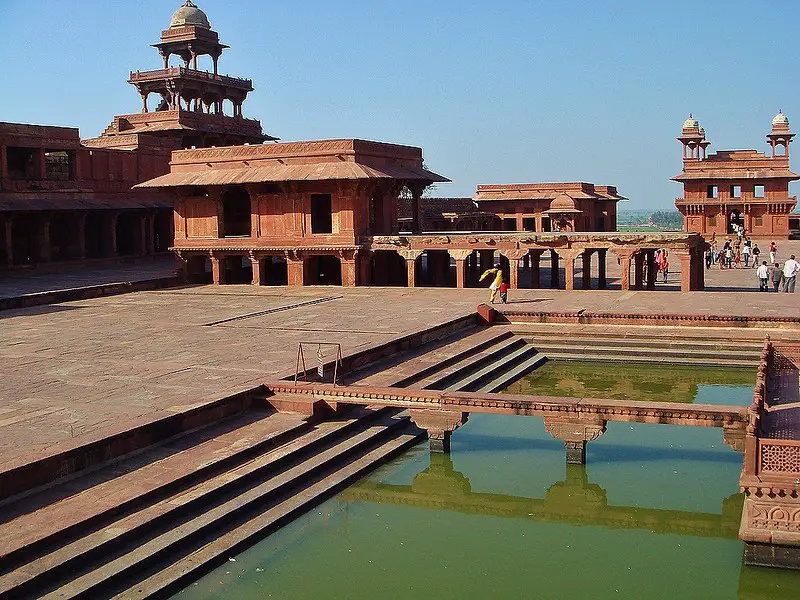
At the same time, Shah Alam, the heir to the throne of the Mughal Empire, was working to consolidate his power across the country. The more terrible Siraj is, the more honorable Shah Alam is. He was a successful poet. He was as delicate and intellectual as he was handsome. Shah Alam, who was exiled from Delhi after the coup attempt, tried to seize power in the former of Mughal tax regions, including Bengal. The followers and the Mughal nobility gave great support to the popular Shah.
However, both Shah Alam and Siraj ud-Daula were too late to take over the country because Robert Clive of the Company was already prepared to seize Bengal.
Chapter 3 – Clive made the Company come to power for the first time by triumphing in the Battle of Plassey.
Siraj’s great army and brutal attitude paved the way for the Mughal-Company conflict, which was a critical turning point in Indian history. In 1756 he arrived at the Gates of Calcutta with his 70,000 Indian soldiers and distracted the clumsy governor Roger Drake and his army of 515.
As can be expected, Siraj’s troops invaded and looted Calcutta. The British prisoners were put in a small cell called Black Hole, where they were suffocated to death.
While the outbreak of Calcutta was a disaster for the Company, it was also economically catastrophic for investors whose personal wealth was depended on the shares of the Company. Immediate reconstruction of the colony was everyone’s top priority.
Robert Clive, who came to the subcontinent with three British troops, was involved in the conflict. The first day after the conflict, Robert Clive declared war on Siraj, the Mughal Empire, on behalf of the Company. This meant for the first time the Company declared war on an Indian prince.
Meanwhile, Janat Seth’s financiers of the country became increasingly stronger with disrespectful Siraj’s disappointments. By supporting Siraj’s Iraqi general, Mir Jafar, as the new Nawab, they applied to the Company for backing in a possible coup attempt.
Learning to adapt to personal enrichment opportunities, Clive accepted the bribes of financier Janat Seths. He convinced the British administration about the coup by saying that the overthrow of Siraj, a French ally, would be the best way to protect British interest on the subcontinent and the British monopoly over Indian trade.
Clive’s army faced with Siraj’s forces at the Battle of Plassey in 1757 but a sudden natural event, monsoon changed the outcome of the war. The company’s military officials tried to keep the cannons dry; however, the Mughals who were not familiar with such armory could not do this. As a result, Siraj was killed at the age of 25, and the treacherous Mir Jafar became the new Nawab. With mutual interest agreement with Janat Seths, Clive became one of the wealthiest men in Europe.

The Battle of Plassey put the Mughals in a process of surrender which met all demand of the Company in the peninsula. While the trade-in India was being restored, the Company gained important privileges, such as territorial protection rights and coinage.
The Company eventually came to power for the first time by weakening a powerful empire that ruled for two centuries. The Company has entered an era of unlimited looting and possession of Indian assets.
Chapter 4 – After the Plassey war, the Indian countryside was brutally looted by the Company.
This new relationship between the Company and the puppet Nawab of Bengal was a conformity situation. It was out of mutual admiration or even understanding. At first, Mir Jafar could not understand that he was dealing with the company rule rather than a single sovereign ruler. In the letters, Clive called him “the old fool”.
In his own name, Robert Clive was delighted with his own victory. In 1760, he came back home with a greater wealth not be seen by Europe since the Spanish conqueror Cortes returned to Europe after looting the Americas. In London, he spread gossips that excite with the shopping spree of estates and townhomes.
Back in the subcontinent, the new Nawab Mir Jafar in Bengal was an uneducated soldier from the Najaf province of Iraq. As a successful strategist but incompetent leader, Mir Jafar has further increased the chaos that Bengal has already experienced. While wearing bracelets decorated with seven different precious Stones on each wrist, he never paid any money to his soldiers in the army. Soldiers and nobles regularly rebelled because of his attitude. The Company also weakened Jafar’s status by manipulating agreed trade arrangements and collecting taxes from the public by “shaking the pagoda tree”. It challenged them with terrible, systematic human rights abuses.

Becoming an important name in the company, Warren Hastings was horrified by the actions of his colleagues. He predicted that chaos would begin when Mir Jafar’s reign ended and tried to prevent it from happening.
Meanwhile, the nominal Mughal emperor Shah Alam still wandered in the countryside, he managed it with his charm and beautiful appearance. When he arrived in Bengal, the former Mughal nobles left Mir Jafar and joined Shah Alam with their personal forces. As a candidate heir to the Mughal Empire, he was still a symbol that held power in India. It was, therefore, a threat to both the Company and Mir Jafar. They tried to take him out at the Battle of Helsa in 1761, but the lucky Shah fled. Mir Jafar’s reign had expired. The Company appointed his son-in-law, Mir Qasim, who was better suited for its own interests instead of Jafar. He quickly brought Bengal a better order than it had been for years. However, he tended to be less flexible to the Company administration and to ignore the ugly behavior of its traders.
When the Company did not respond to Mir Qasim’s complaints about the attitudes of the company representatives, he removed all taxes and customs duties as a last resort to balance the competition between the Company officials and local traders. Moreover, he began to take over the Company property.
The war between the Nawabs and the Company was near.
Chapter 5 – At the Battle of Buxar, three Indian rulers’ forces were defeated by the Company and it started to seize the whole country territories.
Like his father-in-law Mir Jafar, Mir Qasim was an intelligent military strategist. Before the war against the Company, Mir Qasim allied with the nominal Mughal emperor Shah Alam, whose power was mostly symbolic and the Nawab of neighbor Avadh province Shuja ud-Daula, whose power was rather realistic. Shuja was large and extremely powerful. He lived his golden age in 1763 but he could still cut the head of a young bull with one stroke of his sword.
Although the Indian forces overthrew the Company in a siege in Patna, Mir Qasim and his gathering armies lost their final battle in the Buxar river in 1764. Mir Qasim escaped; he later died in poverty. Shuja continued to rule as the Company’s puppet. Shah Alam, knowing his symbolic value, formed an alliance with the Company.
After defeating the remaining three Mughal powers, the Company has now become the dominant entity in northern India. This success paved the way for the Company’s conquest of the territory of the South Asian subcontinent.
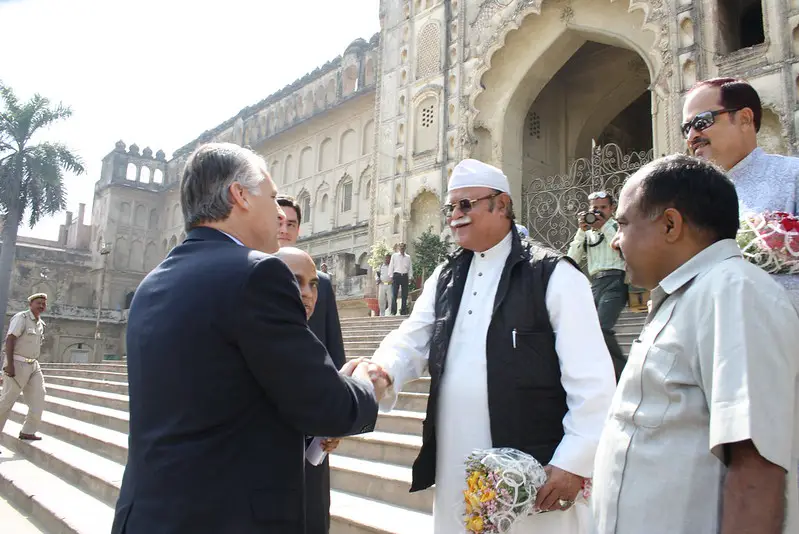
After the collapse of the siege in Patna, worried Company investors secretly voted to send Robert Clive, who recently became a parliamentarian and lord in London, to India to secure their investments.
Clive was aware that the most important issue for Shah Alam was the return of the Mughal throne to him and he gave his word to support the emperor for this purpose. In return, Clive demanded Diwani, known as the economic administration office of the Mughal provinces, including the main source of income in Bengal.
Shah Alam accepted this condition. Shah Alam gave the financial control of whole northeastern India to the Company in return for 2,6 million rupees and a ridiculous promise that Clive would rule according to “Mohamed principles”. The British would then continue to rule Bengal for the next 200 years.
Clive wrote that the Bengal Nawab had nothing except the Name and the Shadow of Authority.
Since then, India has been seen as a major cultivation area and all profits have been sent abroad, that is, to London. Nothing was left behind for an average Indian citizen. Centuries-old Indian art traditions disappeared with their last professionals; there was no middle-class market for their craft. Anyone who did not accept to work under the wages set by the market has been sentenced to severe fines.
It was a blessing for the shareholders. The Company’s stock value has doubled in eight months.
But it was a disaster for the people of Bengal. But they hadn’t experienced the worst yet.
Chapter 6 – The Company, which has lost its focus due to economic troubles in the Company and rivalries among the executives, was not ready for its worst military conflict in decades.
There was a disaster in 1770. A two-year drought raised the price of rice all at once. Bengal was attacked by famine. The Company didn’t do anything to help Bengali people who were struggling with famine. In reality, the Company continued to collect taxes-in in some cases it even increased taxes. As a result, 1.2 million Bengalis died due to starvation or disease.
In England, which claimed the word of honor, the people’s thoughts about the Company were broken. Then, during the European financial crisis in 1772, the share values of the Company drastically fell. Company executives struggled to receive an aid package of over £1.5 million from the Bank of England.
It was clear that Indian wealth was advancing the British economy. Parliament saved the Company because it was too big to fail. The company accounted for half of Britain’s trade. There was also a clear concession: 40 percent of the representatives in the parliament owned the Company stocks.
Robert Clive was questioned in the Parliament, but ultimately, formal criticism was avoided. However, he had become a disliked person in London and was called “Lord Vulture” in the press. In 1774, he killed himself when he was 49 years old.
In India, principal Company official Warren Hastings who tried to put the worst crimes in order has been blamed for the disaster. His representative was Philip Francis.
It was a bad start between the two. First, Francis was a little uneasy that Hastings did not wear a ruffled shirt in their first meeting. Moreover, Francis did not like India at all and he could not sincerely trust Hastings’ clear admiration for the country. Ongoing power struggles made the Company management in India dysfunctional.
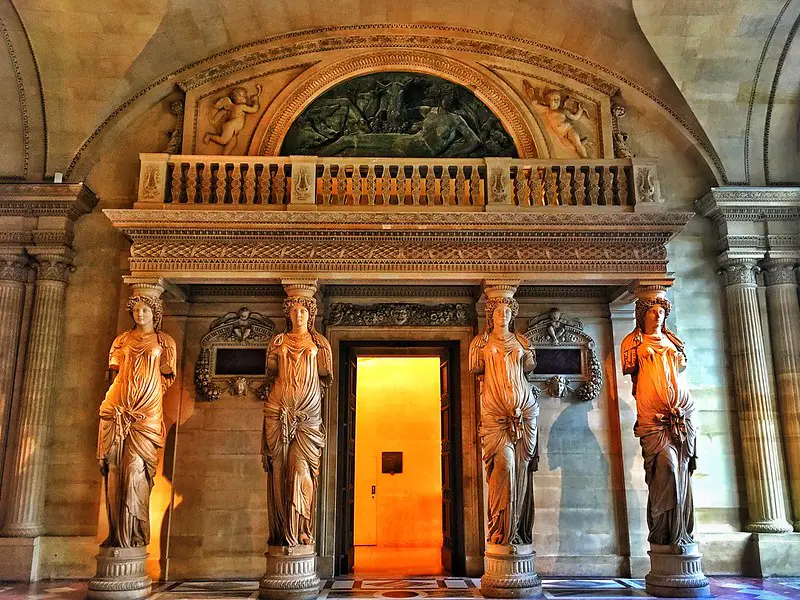
Two of the Company’s former enemies have kept in their minds the political deadlock in Bengal: the Marathas and the Sultan of Mysore, Haidar Ali, with his wild son Tipu Sultan. Each of them had a secret power. The Marathas worked with the intelligent general Nana Phadnavis-the the so-called Maratha Machiavelli. The Mysore Sultans were the rulers who received French military training and equipped their armies with French armaments.
While the Marathas and the Mysore Sultans formed a strong and dangerous alliance, the fight between Hastings and Francis peaked; neither of them realized that the threat was approaching. They were going to fight against the powerful Indian alliance very soon. In the Battle of Pollilur, the Triple Alliance including Maratha, Mysore, and France won a major victory against the Company.
But for the next few months, Hastings has made a surprising and successful breakthrough with a combination of military action and diplomacy. This paved the way for the Sabai Treaty to be signed in 1782.
The company’s enemy never had the opportunity to defeat them again.
Chapter 7 – Shah Alam’s hopes of returning to the throne of the Mughal Empire and his devotion to Marathas resulted in disaster.
In 1771, Shah Alam was tired of the Company’s and Nawabs’ empty promises to enthrone him to the Mughal throne inherited from his ancestors in Delhi. He was well aware that he was the symbolic leader of India and determined to take his country back.
He allied with Marathas, who helped him to gather an army of 16,000 to accompany him on his way back to Delhi. The Marathas also gave their word to promote him in a court full of conspiration and possible usuary after he ascended the throne.
The return to Delhi was almost effortless. Shah Alam took over the city again and took back the Peacock Throne. But soon, he began to realize that he was not satisfied with his success. With the help of his new secret assistant –clever and brilliant general Najaf Khan- he thought that he could also take back his ancestral tribute lands, which had stopped giving land taxes in the middle of the chaos.
In 1772, Shah Alam started a war against the Company to take back his land, and soon after he gained the lands providing a regular income source to Delhi. Shah Alam has provided financial support towards a revival of the cultural area of Delhi, which has lost its functions in the chaotic years since the day he left. He also watched over his powerful reign including his newly adopted son, Ghulam Qadir. This relationship has been ongoing for the rest of his life.
Shah Alam was very fond of this child, who was not exceptional in all aspects other than his solid appearance and unlimited arrogance. This led to the spread of rumors that Shah Alam had an illegal relationship with the child. It was not clear whether this is true, but whatever happened between them Qadir became upset.

The unexpected death of Najaf Khan in 1782 led to the chaos in Shah Alam’s reign. Without land revenues, he became dependent on the Marathas, whose priority issues were different. Sometimes his dynastic family did not even have food to eat because the Marathas had not reserved a palace budget for them.
During the chaos in 1788, Ghulam Qadir took a terrible revenge. He attacked the palace of Shah Alam, raped his households, and killed them. He plundered all remaining treasure of the court and cut out the eyes of the old emperor. The Marathas intervened, saving Shah Alam’s life but it was too late. The emperor was ruined and in despair. The last lion of the Mughal Empire had lost his teeth.
Chapter 8 – Combining finances and bureaucracy in one hand helped the Company overcome its ongoing troubles.
The American Revolution in 1776 negatively affected the colonial empire, Britain. Neither the Company nor the Royalty could handle the same change in India. They sent General Cornwallis, who had left America with a defeat, to India to ensure that India remained under British control.
In 1786, Cornwallis arrived at Calcutta, a rapidly developing city with a population of 400,000. After the phase of uncertainty and chaos, the Company regained its former strength by organizing and recovering its great army.
The British were concerned about the rise of a colonial class of European settlers’ next generations, who could endanger the British rule, as it happened in the Thirteen Colonies in America. Cornwallis has launched bald racist laws that prevent families of mixed European and Indian origins from occupying the Company positions and owning territory. A pro-British Hindu conception of service emerged, supporting the British public offices.
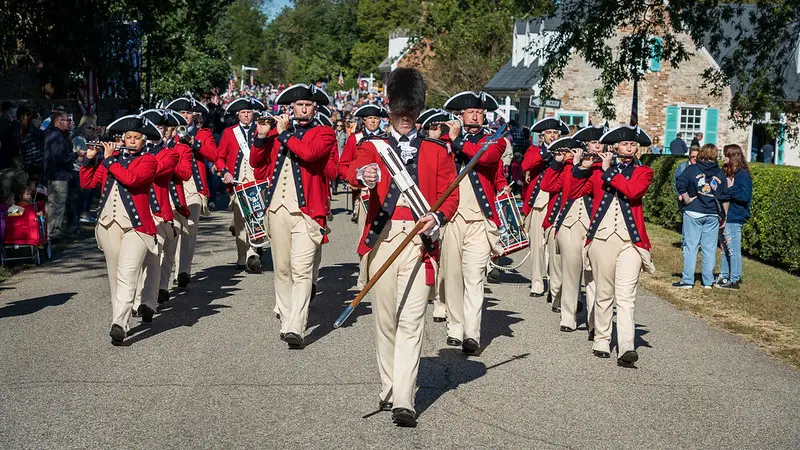
Strong and very wealthy Indian financier families also formed alliances with the Company. Ultimately, it was the unlimited privilege given to the British by the Indian Financiers, which allowed Britain to suppress the remaining Indian resistance.
The first of the remaining resistances was launched by Mysore.
The Mysore ruler Tipu Sultan took over his reign from his father, Haidar Ali. However, while bringing fortunes to Mysore, Tipu Sultan did not have a sense of diplomacy and violently fought against his enemies, including the Marathas.
In 1791, Tipu fought with the Company in the Third Anglo Mysore War. Things seemed to be okay for him. His armies were immensely rapid compared to the British who went to war with at least six servants, a full set of camping furniture, 24 suits, and more.
It was necessary that Cornwallis, the leader of the Maratha forces, intervened in the war to sign the British agreement. As a surrender price, Cornwallis has forcibly obtained half of Tipu’s territories. With these new lands from Mysore, the Company became the majority of the regional power in India.
When the Company appointed Richard Wellesley in place of Cornwallis, Tipu took advantage of this opportunity. He made wise offers to Napoleon, however, this French-Mysore alliance did not last long. When Napoleon’s fleet burned down in Egypt, Tipu was left all alone. He had no allies and Money to recover his army forces. In contrast, the Company had unlimited support from allied families of Indian financiers.
But Tipu was determined to take over the British rule no matter what. He was killed in the Fourth Anglo-Mysore War in 1799. After the news of Tipu’s death, Wellesley raised his glass and said: “I drink to the corpse of India.”
Chapter 9 – The Company, finally backed by the last Mughal Emperor Shah Alam, had to fight with the Marathas and the French.
The last Indian insurgents against the Company domination were the volatile Marathas, who had been both friends and enemies of the British over the decades. With the help of the French, the Marathas and the blind and upset Shah Alam, the nominal Mughal emperor, whose only pleasure was to write poetry did not give up Delhi.
In 1800, the death of the Maratha politician Nana Phadnavis caused the disorder. A modern observer says that “the Maratha princes seemed less like a confederation than a bag of ferrets.”
In the middle of chaos, three young princes, each at the lead of their own militia, came to the fore. However, in an instance where an alliance was most needed, the only thing that all three could do was to fight like cats and dogs. Finally, in 1802, Wellesley managed to convince one of them, Baji Rao, to sign an alliance agreement that connects his followers to the British.
The Company’s army was developing and reaching 155,000 soldiers. Using the credit facilities of Indian financiers, Wellesley was able to pay his army full and timely wages. On the contrary, the Marathas went bankrupt because of the tax system that was destroyed by decades of the civil war.
Wellesley planned to fight with each Maratha prince individually, but the other two were successful to join the armies. They opposed the Company at the Battle of Assaye in 1803. Later, Wellesley would say that they dealt with greater resistance than Napoleon did at Waterloo. Eventually, the company saved the day.
The Marathas were defeated so much that they could not fight again.
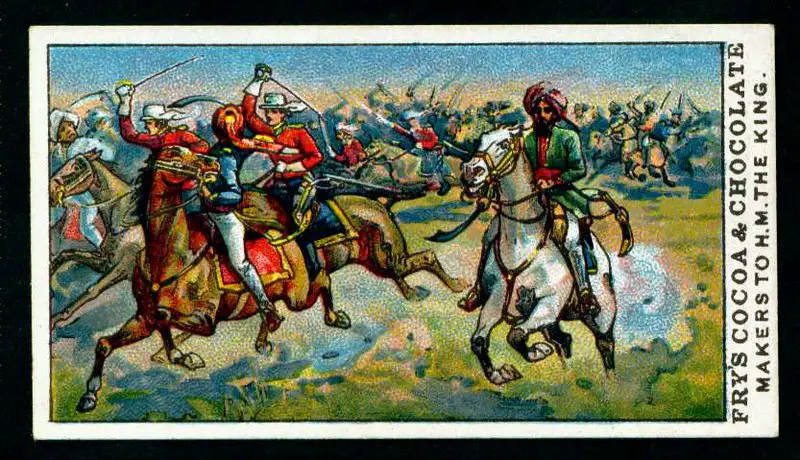
Their French supporters, on the other hand, were still poking. Shah Alam knew that the Company would not leave the French all alone in India. When he heard that the Marathas were defeated in the war, the old Shah made an offer, preferring the British alliance against the French. This was his last performance in his career of survival diplomacy.
the war, in which the British confronted the French finally and certainly in India, was the Battle of Delhi in 1803. British victory meant that India would be under British control for another 144 years.
Shah Alam, 77, listened to the Battle of Delhi from the roof of Red Fort, the historic Mughal fortress of the city. When the war ended, he presented himself for the official transfer of power. He was a miserable, blind, and poor person. Finally, after a long and painful period, his life was over.
Chapter 10 – Philip Francis formed a gossip campaign to defame his former enemy Warren Hastings, but the campaign failed and paved the way for the collapse of the Company.
In London, former Company executive Warren Hastings was charged by Parliament in 1788. He and the Company itself were not blamed for anything less than the “rape of India.” To put it in reality, these crimes included extortion, cruelty, and abuse of power. The Company administration was accused of doing nothing for India, stripping its assets, impoverishing and destroying their population.
The attendees, including the Queen, and the people sleeping on the streets to follow the scandalous cases decided that the Company was guilty. The problem is that they blamed the wrong guy.
As a Company official, Hastings was not innocent, of course. But throughout his career, he worked harder than anyone else to restrain the worst excesses of the Company. His convictions were the result of a systematic smear campaign by his enemy Philip Francis, who had spent years trying to persuade Parliament to overthrow Hastings.
After a 7-years trial, Hastings got rid of all charges. But he had lost his power at the end of his life and never fully recovered. Nevertheless, the trial was important in terms of exposing the Company’s corruption and cruelty.
From the trial of Hasting to the explicit expropriation of the company in 1858, the British government has taken a more active role than ever to manage what’s happening in its most important colony. People began to question how Britain tolerated India run by a company board from another continent.

Parliament accepted. In 1813, the company’s trade monopoly over India was lifted. this enabled other traders, agencies, and companies to establish trade relations in Calcutta and Bombay. It also paved the way for a heated discussion about the continuation of the Company’s existence.
The last anger appeared in 1857. In the bloodiest part of the British colonial history, the Company’s private army killed tens of thousands of suspected rebels in the upper and lower towns of the Ganges River.
Two years later, Parliament decided to dispel the Company’s private army and navy. All company territories were given to British royalty. This made Queen Victoria the ruler of India instead of a board of executives. The company contract expired silently in 1874.
The Anarchy: The East India Company, Corporate Violence, and the Pillage of an Empire by William Dalrymple Book Review
The eighteenth century was a time of chaos for India. Thanks to military modernization, Parliamentary assistance, and financial aids from both European and Indian financiers, the East India Company came out as the single economic, political, and regional ruler of the entire Indian peninsula. In a search for power and personal wealth, the Company and its officers plundered the country, causing violent death, destruction, and cultural turmoil.
